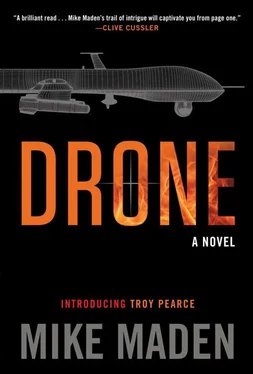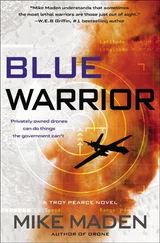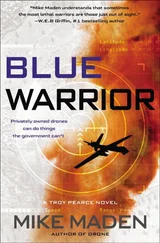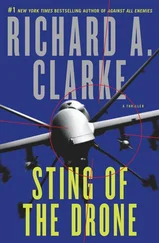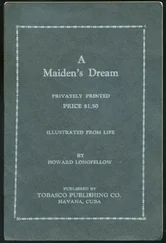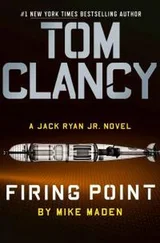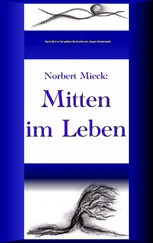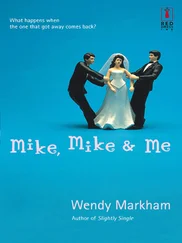The big radar-controlled 40mm Bofors deck gun on the Joaquín began firing just as Captain Costa reached the bridge. The first round tore into the thin steel skin of the six-hundred-foot-long freighter ten feet above the waterline. The whole ship shuddered with the strike. Another shell followed five seconds later, slamming into one of the big stacked containers on deck. It tumbled overboard with twenty tons of diesel motor parts inside. The splash leaped thirty feet into the air.
The captain bellowed orders to the radio operator to send out a Mayday to the naval air station in New Orleans and report they were under attack.
Minutes later, a pair of F/A-18 Hornets flown by the River Rattler squadron scrambled into action.
Captain Costa ordered the helmsman hard to port, trying to turn her big ship’s bow toward the Mexican warship to reduce her target profile. It was a completely futile gesture on her part, but it was better than doing nothing.
The Joaquín , traveling at more than twice the speed of the freighter, turned to starboard, drawing out into a wider circle to improve its angle of attack. For a brief moment, the two ships actually were bow on, but the radar-controlled gun continued to fire. The armor-piercing round struck the topmost container on the bow and blew it to pieces, turning the machine parts inside to shrapnel that sprayed the surface of the water like shot pellets.
The two ships were now only a thousand yards apart as their bows separated on the point of axis, and the patrol boat’s L70 Oerlikon 20mm cannon opened up, raking the Star Louisiana ’s superstructure with withering fire at the rate of five rounds per second. The 20mm rounds shattered the thick marine window glass and shredded the bridge like tissue paper. The helmsman standing at his post took a round square in his broad chest. His upper torso disintegrated in a spray of blood and bone as shards of glass and steel pinged around the cabin.
The captain and the first mate had instinctively hit the deck, both barely escaping decapitation by the molten lead scythe roaring above their heads. They were safe for the time being. The Mexican warship was low in the water relative to their position on the deck inside the high bridge superstructure. But that would last only until the Mexicans came full around and could fire on her exposed port side.
Right now, though, Captain Costa’s ship was drifting to a halt. Man-size wooden ship wheels and brass-plated engine-order telegraphs had disappeared decades ago, replaced by an array of computer monitors, control sticks, and track balls that looked more like the bridge of a spaceship than a merchant vessel. Now that the helmsman’s torso was sprayed over the back wall of the bridge and his station smashed, the engines were cycling down and the ship’s rudder returned to neutral position.
Costa belly-crawled toward the helmsman’s station. She had to find a way to switch the systems back to manual and get the ship under way. Her elbows bled as they scraped across the razor-sharp glass and metal fragments on the rubberized deck.
Another 40mm round slammed into the sky-blue hull of the Star Louisiana and the ship shuddered again. The chief engineering officer’s voice shouted over the loudspeakers that the number one engine had just been destroyed. Costa knew that the chief was shouting because the engine room was so damn loud, not because the old salt was panicked. She kept crawling, and wondered what the adrenaline dump into her bloodstream was doing to her baby.
* * *
The bridge of the Joaquín was in significantly better shape than the bridge of the Star Lousisiana , though the dried blood from the slaughtered Mexican crew on the steel deck wouldn’t have passed the lieutenant’s inspection under normal circumstances.
“Two aircraft, closing fast, six hundred knots, lieutenant,” said the radar operator in Farsi.
“That’s it, then. Helmsman, come hard to starboard. Let’s ram the great fat bitch,” the lieutenant ordered.
The young Iranian naval officer was surprisingly calm for his first action, the senior helmsman noted. Under normal circumstances, he would have nominated him for a hero’s medal. But there was no need now. Martyrs received their rewards from the hand of Allah himself.
“Coming hard to starboard, Lieutenant.”
The Iranian naval crew had been brought in for just such a mission. They had been stationed in Cuba for over three months waiting for an opportunity for naval jihad against the Great Satan and had spent their time studying Mexican naval operations and Spanish. Operating the vessel was simple enough; ship controls were universal in design and function these days. All of the enlisted men selected were veteran sailors and eager for martyrdom.
The ship’s bow turned surprisingly fast and soon pointed directly at the giant white letters painted along the side of the enormous hull.
“All ahead flank.”
“All ahead flank,” the helmsman repeated.
With any luck, the lieutenant hoped, they’d rip the containership in half and sink her before the American fighter bombers pinging on his radar scope could stop them.
The two automatic deck guns continued to boom and roar as they fired their shells. The noise was fearsome even inside the sealed bridge. The air bore the faint copper smell of the explosives despite the air scrubbers. The big white letters on the containership were quickly pockmarked with giant shell holes and the big steel containers on deck practically melted under the stream of lead from the 20mm gun.
“One minute to target, sir!” the helmsman shouted proudly.
“Inshallah!” the lieutenant shouted back with a joyous smile.
But the lieutenant had made a tactical error. By maneuvering the Joaquín into ramming position, he put himself between the two F/A-18 Hornets and the Star Louisiana . That gave the Hornets a clear line of sight to the Joaquín . They acquired radar lock on their target, then fired four antiship missiles from twenty miles away.
Too late.
Ten seconds later, the bow of the Joaquín tore into the starboard side of the big containership, ripping a twenty-foot-tall hole in the hull and fatally snapping the ship’s steel spine.
The Iranians cheered as they were thrown against the bulkheads with the force of impact, but their victory cries caught in their throats as the four inbound missiles struck the Joaquín , vaporizing the warship in a cloud of fire and steel.
Thirteen minutes later, the Star Louisiana sank with all hands on board.
Inshallah.
San Diego, California
The news about the Mexican patrol boat attack on the American freighter and its subsequent sinking by U.S. Navy aircraft jammed the radio and television news broadcasts all day, but Pearce couldn’t pay attention to any of it. Pearce knew Myers would have her hands full and she’d be lucky to get out of a full-blown shooting war with Mexico before the day was over.
But that was her problem. Pearce and his team were laser-focused on tracking Ali and hell-bent on setting up a capture with zero civilian casualties, which was growing increasingly unlikely.
After arriving at L.A.’s Union Station by bus, Ali grabbed a couple of cabrito tacos from a nearby food truck and washed them down with a grape soda before purchasing a ticket with cash for a shared Prime Time Shuttle ride to the San Diego airport. What made Pearce nervous was that Ali wore a beige windbreaker that he kept zipped up at all times.
Judy Hopper flew Pearce in a company helicopter to the San Diego airport where Pearce Systems maintained a private hangar. The Eurocopter AS350 she was flying was decked out with Pearce Systems corporate logos, which wasn’t ideal, but there weren’t any other options at the moment.
Читать дальше
